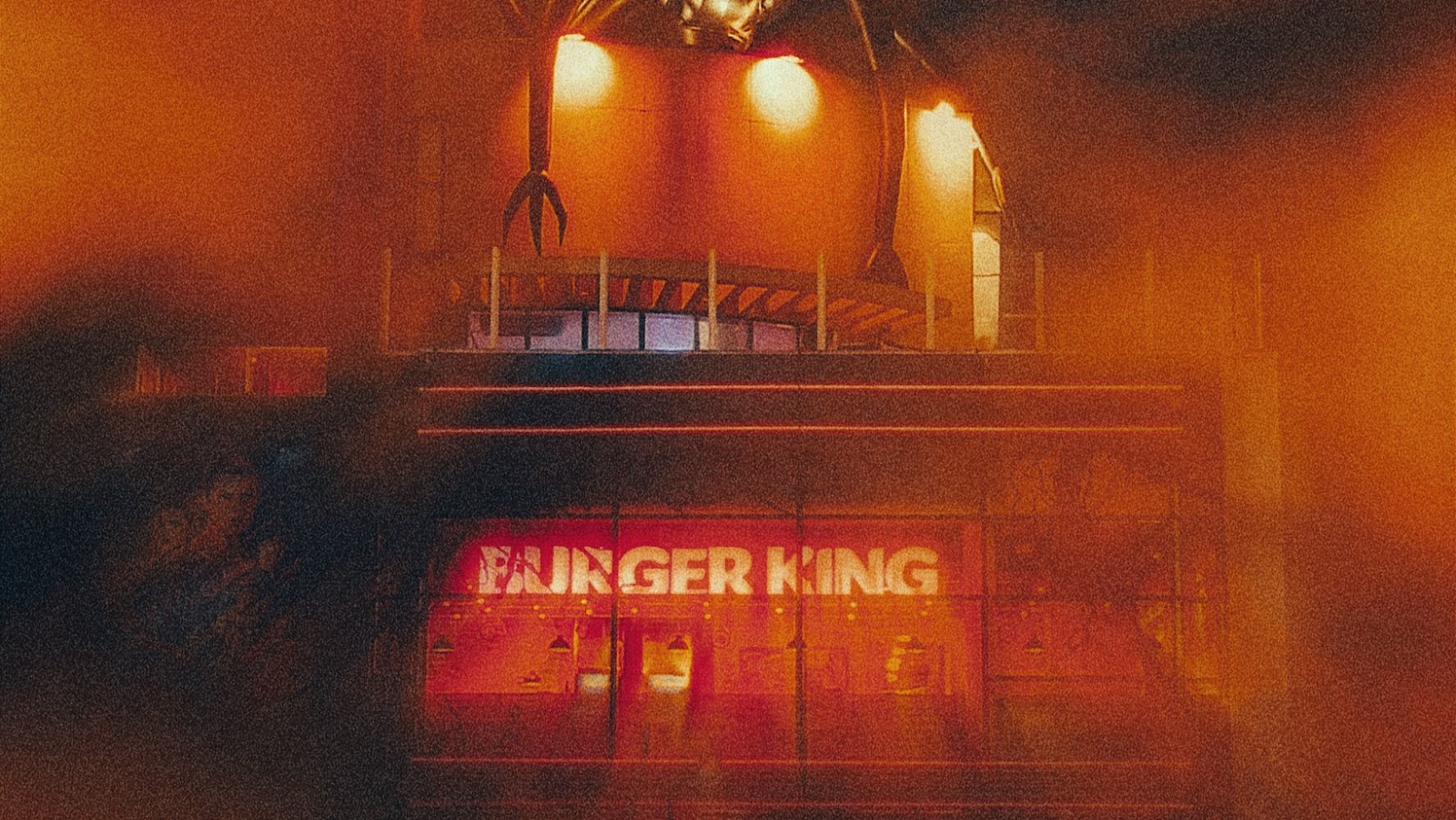The Birth of Wendy’s Restaurant Architectural Structure

Wendy’s restaurants use a type of brick called “Wendy’s Red.” This unique brick is a blend of four different shades of red clay and is custom-made to match the iconic red color of the Wendy’s logo. Wendy’s Red bricks are highly durable and fire-resistant, making them an excellent choice for the exterior walls of the restaurant.
In addition to Wendy’s Red bricks, some Wendy’s locations also feature architectural elements such as steep roofs, cupolas, and bell towers, which give the restaurant a distinctive look. The overall design of Wendy’s restaurants is a mix of old-fashioned and contemporary elements, creating a warm and inviting atmosphere for customers to enjoy their meals.
The History of Wendy’s Architecture
The architecture of Wendy’s is a long-standing history of classic, timeless design. Founded in 1969, the company is well known for their unique use of brick in the construction of their restaurants. The original bricks used were from the Ohio-based Glen-Gery Brick Company, a popular choice for commercial and residential projects. Let’s take a closer look at the history of Wendy’s architecture and the type of brick used in its construction.
The Birth of the “Modern” Wendy’s Look
The “modern” Wendy’s look emerged in the early 1980s, reflecting changes in the fast-food industry and a move towards more contemporary design. Wendy’s architecture has always been characterized by the use of brick, specifically the use of a type of dark red brick known as “clinker brick.” This brick style was initially chosen for its durability, insulation properties, and fire resistance. However, it later became a defining feature of Wendy’s brand identity and was used for its aesthetic appeal. The clinker brick provided a warm and welcoming atmosphere that set Wendy’s apart from its competitors.
Today, Wendy’s continues to incorporate brick into its designs, often pairing it with modern elements such as glass, metal, and wood to create a timeless and inviting look. Next time you visit a Wendy’s restaurant, take a closer look at the bricks used in the construction of the building to appreciate the history and brand identity behind this architectural choice.
The Evolution of Wendy’s Architecture Over Time
Wendy’s restaurants have a distinctive architecture that has evolved over time. The first Wendy’s restaurants were designed with a simple, utilitarian style, featuring red and white stripes and a prominent Wendy’s logo. Over time, the design became more complex, incorporating elements like brick facades, glass windows, and pitched roofs. In the late 1980s and 1990s, Wendy’s introduced a new design, featuring an oversized cupola and a red mansard roof.
The cupola acted as a beacon for hungry travelers, making the restaurant easy to spot from a distance. Today, Wendy’s restaurants continue to feature elements of the classic design, such as red and white stripes and the recognizable Wendy’s logo. However, the architecture has evolved to include a more modern look and feel, with sleek lines, neutral colors, and large windows that let in natural light. As far as the brick used for Wendy’s restaurant constructions, it varies from location to location, but they generally use red or brown bricks with a smooth finish.
Wendy’s Signature Design Elements
Wendy’s fast-food chain is well-known for its unique architectural designs and signatures. The prominent design element of Wendy’s architecture is the mansard roof that creates a distinctive appearance to the restaurants. Apart from the mansard roof, Wendy’s also uses red bricks on the exterior of their restaurants. These bricks are known as “Roman bricks,” and they give a classic appearance to the building’s exterior.

Roman bricks are denser and more robust than other bricks, providing greater durability and a unique appearance. Along with the iconic roof and brick exterior, Wendy’s is also famous for its wooden trims and window shutters, corrugated metal roofing, and large windows that let natural light in. All these signature design elements make Wendy’s restaurants stand out from other fast-food chains, and they are instantly recognizable to customers.
What Kind of Brick Does Wendy’s Restuarant Use Construction
Constructing a Wendy’s restaurant requires careful consideration for the materials used for the building’s foundation, walls, and roof. Wendy’s uses a combination of various materials including concrete, steel, brick, and glass in order to create a strong, durable, and aesthetically pleasing structure. In this article, we’ll take a closer look at the types of bricks used in Wendy’s construction. Wendy’s restaurants are typically built using a type of brick called “Utility Brick.” This brick is commonly used in commercial construction due to its durability and low cost.
Utility Brick has a matte finish and is available in various earthy tones, making it a versatile option for construction. The bricks are usually arranged in a running bond pattern, with each brick offset by half of the one below it. In addition to Utility Brick, Wendy’s restaurants also commonly feature metal panel accents and large windows to allow for natural light.
The Benefits of Using Brick in Restaurant Construction
The use of brick in restaurant construction has numerous benefits, from its aesthetic appeal to its durability and sustainability. Wendy’s restaurants, for example, use a type of brick called “Wendy’s Red” brick for their construction, which aligns with their brand image and sets them apart from other fast-food chains. Here are some benefits of using brick in restaurant construction:
- Durability: Brick is a sturdy and fire-resistant material, making it a safe and long-lasting option for restaurant construction.
- Aesthetics: Brick has a timeless, classic look that adds to the visual appeal of a restaurant’s architecture and design.
- Sustainability: Brick is an environmentally friendly material, made from natural materials and requiring minimal energy to produce.
- Branding: The use of Wendy’s Red brick is a unique aspect of the brand’s architecture and sets them apart from other fast-food chains.
How Wendy’s Brick Construction Compares to Other Fast Food Chains
Wendy’s restaurants are built using classic design and durable brick materials that far surpass the quality of those used by other fast-food chains. Wendy’s uses a mix of thin bricks, full-sized modular bricks, and decorative bricks in their construction. The thin bricks are often used to cover interior or exterior walls to create a clean, attractive look. Full-sized modular bricks are the standard building blocks of the restaurant, and decorative bricks add design elements to complement the overall look of the building.
Wendy’s carefully selects the bricks used in their construction process, ensuring that they are proven to resist the elements and last for many years to come. The brick construction of Wendy’s restaurants sets them apart from other fast-food chains, adding a touch of quality and sophistication to the design of the buildings. The next time you visit a Wendy’s, take a moment to appreciate the craftsmanship and quality of the brick construction.
The Design and Layout of Wendy’s Restaurants
Wendy’s restaurants have been around for over 45 years, but what makes them stand out is the design, layout, and construction materials used. Wendy’s is known for its bright and contemporary interior designs, with an emphasis on uniformity, which is achieved through a specific brick material. Let’s explore the architecture of Wendy’s and the various details that go into the construction of the restaurant.
The Impact of Wendy’s Architecture on Its Brand Image
Wendy’s architecture is a crucial aspect of its brand image and plays a significant role in creating a welcoming and comfortable atmosphere for customers. The design and layout of Wendy’s restaurants are carefully planned to evoke a sense of warmth and familiarity while reflecting the brand’s values of quality, freshness, and value for money.
Wendy’s restaurants are often constructed of red brick, which creates a classic and timeless look. The use of brick in Wendy’s architecture is a nod to the brand’s commitment to quality and tradition. The brick also sets Wendy’s restaurants apart from fast-food chains that rely on plastic and metal for their buildings.
In addition to the use of brick, Wendy’s architecture emphasizes open spaces, natural light, and comfortable seating. The design is more similar to that of casual dining restaurants than fast-food restaurants, helping to elevate the brand’s reputation and image. The careful attention paid to Wendy’s architecture has helped to create a strong brand image that is recognized and respected by customers worldwide.
The Role of Wendy’s Architecture in the Customer Experience
The architecture of Wendy’s restaurants plays a significant role in the customer experience and is a crucial element in making the brand stand out from its competitors. The chain’s distinct architecture and layout make it easily recognizable to customers and contribute to the overall atmosphere of the restaurant. Wendy’s uses brick construction for its stores, creating a warm and inviting environment that encourages customers to linger and enjoy their meals.

The design features a signature red mansard roof, large windows that allow plenty of natural light to flood the dining area, and a welcoming façade that invites customers to come inside. The interior layout of Wendy’s restaurants is also carefully designed to optimize customer flow, with clear signage and well-placed counters and seating areas. All of these elements work together to create a welcoming and memorable dining experience for customers.
The Future of Wendy’s Architecture – Upcoming Changes and Plans for Expansion
The future of Wendy’s architecture is focused on modernizing and upgrading its design and layout. Wendy’s is set to undertake several changes and plans for expansion, such as incorporating technology into its drive-thrus, redesigning its interior and exterior aesthetics, and constructing more sustainable buildings. One of the notable features of Wendy’s architecture is the use of a special brick called Wendy’s Old Fashioned Hamburgers brick. This brick was developed specifically for the chain, and it is made with a blend of clays and minerals that give it a unique texture and color.
Going forward, these changes and upgrades will help keep Wendy’s competitive in the fast-food industry, attracting a new customer base and improving the overall dining experience for patrons. These renovations are set to attract more customers and increase the brand’s market share in the fast-food industry while remaining true to its classic and recognizable aesthetic. Wendy’s architecture is a great example of how a brand can balance modernization with its classic image. Using unique building materials that are tailored to its brand image can definitely make a lasting impression on customers.

 RapidHomeDirect.com Review: The Truth About Selling Your House for Quick Cash in 2024
RapidHomeDirect.com Review: The Truth About Selling Your House for Quick Cash in 2024  Henatigasm: The Ultimate Anime Streaming Platform That’s Taking Over in 2023
Henatigasm: The Ultimate Anime Streaming Platform That’s Taking Over in 2023  Transforming Work: Embrace Auldtwork for Flexibility, Creativity, and Collaboration
Transforming Work: Embrace Auldtwork for Flexibility, Creativity, and Collaboration